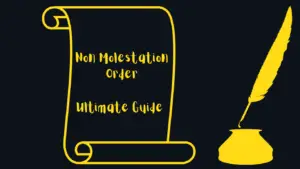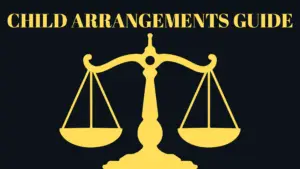Court Bundle for a Child Arrangements Order
When it comes to family court and Child Arrangements Orders, proper preparation is key. Building a well-structured and compelling court bundle can significantly impact the outcome of your case. In this article, we will guide you through the process of creating a smooth and persuasive bundle specifically tailored for Child Arrangements Orders, ensuring you present your case in the best possible light.
Quick Navigation:
Section A: Pre-Court Documents (Preliminary Documents)
Section A of the court bundle contains all relevant correspondence, letters, and notices exchanged before the court proceedings. These documents lay the foundation of your case and provide vital context to the court.
Section B: Court Applications and Orders
Include copies of any applications made to the court, such as requests for specific orders or hearings. Don’t forget to incorporate any court orders issued regarding the Child Arrangements case. This section of the court bundle demonstrates the actions taken and decisions made by the court thus far.
Section C: Party Statements
Gather statements from all parties involved in the case, including parents, the local authority, and any other relevant individuals. Include in this section of the court bundle opening and closing statements by barristers, as well as the arguments presented by each party. These statements provide the court with a comprehensive understanding of each party’s position and their perspectives.
Section D: Care Plans (Local Authority)
Incorporate the care plans prepared by the local authority, outlining proposed arrangements for the child’s care and welfare. This section of the court bundle demonstrates the intended course of action by the responsible authorities and provides insight into their recommendations.
Section E: Experts and Assessments
In this section of the court bundle include reports and assessments conducted by experts, such as social workers, psychologists, or any other professionals involved. These documents carry significant weight, providing professional insights and opinions that support your case.
Section F: Medical Records
Gather relevant medical records, including those from general practitioners, hospitals, and specialists. Include records that shed light on the child’s health condition or any medical concerns relevant to the case. These records substantiate claims and provide crucial information regarding the child’s well-being.
Section G: Police Statements (or Disclosures)
If there are any police statements or disclosures relevant to the case, ensure they are included in this section. These documents serve as critical evidence or provide insights into incidents or allegations pertaining to the child’s welfare.
Section H: Child Contact Notes
Include records or notes documenting any contact or visitation between the child and involved parties. These records provide a detailed account of the child’s interactions and experiences throughout the court proceedings.
Conclusion
Crafting a well-organised bundle for a Child Arrangements Order is vital to effectively present your case in family court. By following the suggested sections and incorporating relevant documents and evidence in a logical order, you can build a persuasive and comprehensive court bundle. Remember to consult legal professionals and adhere to court guidelines for specific requirements. With a meticulously prepared bundle, you can navigate the family court process confidently and increase the likelihood of obtaining a favourable Child Arrangements Order that serves the best interests of the child involved.
👉 Learn more about how we can support you or book a free consultation today
🧠 Insider Insight: Lach, our founder, is a qualified social worker who used to write Section 7 reports for CAFCASS — the very reports that influence court outcomes. Now he helps dads respond to them. Learn more about Lach’s background.




